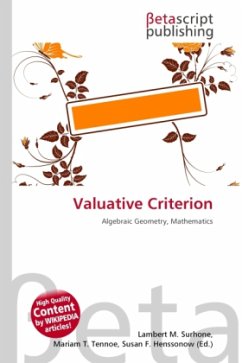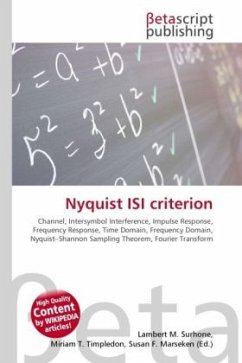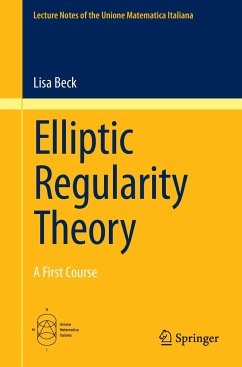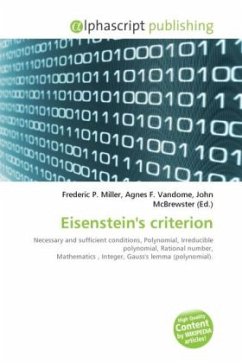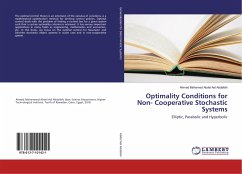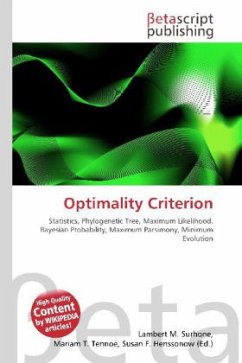
Optimality Criterion
Versandkostenfrei!
Versandfertig in 6-10 Tagen
32,99 €
inkl. MwSt.

PAYBACK Punkte
16 °P sammeln!
Please note that the content of this book primarily consists of articles available from Wikipedia or other free sources online. In statistics, an optimality criterion provides a measure of the fit of the data to a given hypothesis. The selection process is determined by the solution that optimizes the criteria used to evaluate the alternative hypotheses. The term has been used to identify the different criteria that are used to evaluate a phylogenetic tree and include maximum likelihood, Bayesian, maximum parsimony, and minimum evolution. For example, in order to determine the best topology be...
Please note that the content of this book primarily consists of articles available from Wikipedia or other free sources online. In statistics, an optimality criterion provides a measure of the fit of the data to a given hypothesis. The selection process is determined by the solution that optimizes the criteria used to evaluate the alternative hypotheses. The term has been used to identify the different criteria that are used to evaluate a phylogenetic tree and include maximum likelihood, Bayesian, maximum parsimony, and minimum evolution. For example, in order to determine the best topology between two phylogenetic trees using the maximum likelihood optimality criterion, one would calculate the maximum likelihood score of each tree and choose the one that had the better score. However, different optimality criteria can select different hypotheses. In such circumstances caution should be exercised when making strong conclusions. Many other disciplines use similar criteria or have specific measures geared toward the objectives of the field.





